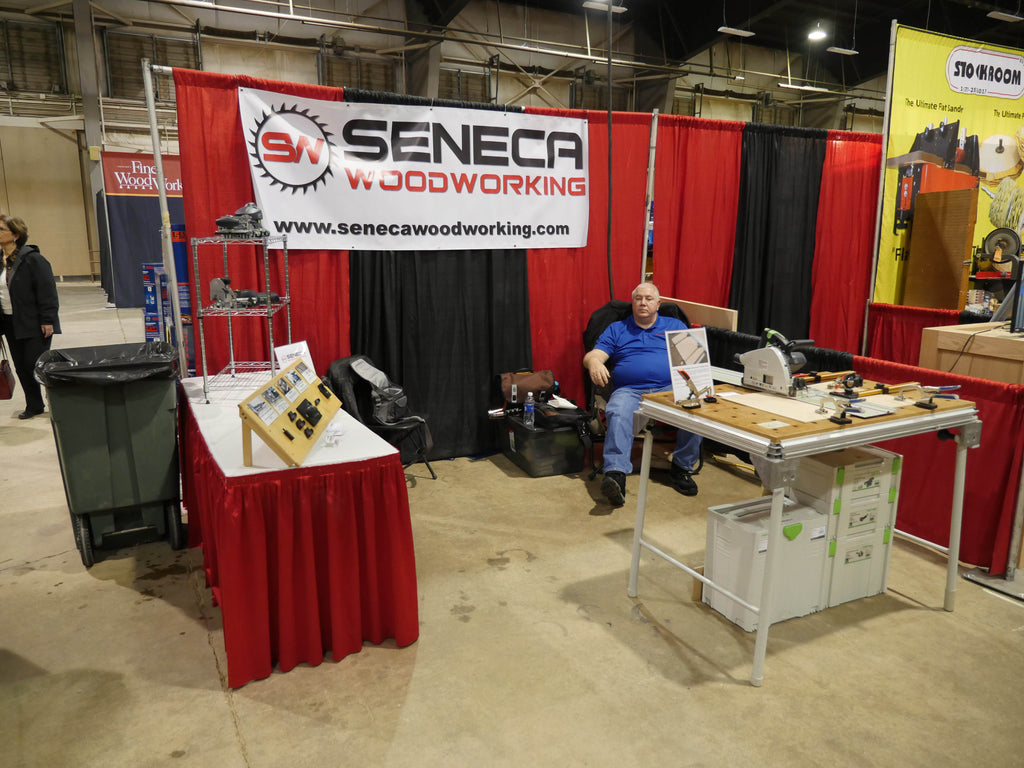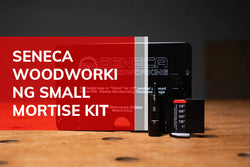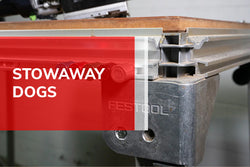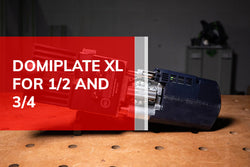Seneca History: Making the Business (10 Year Story pt.2)

If you missed yesterday’s email on the history of Seneca Woodworking, Click HERE to read it…

Around this time we did our first trade shows; Dad and I kicked things off by attending The Woodworking Shows Columbus, and Woodworking in America. Dad’s health made long days on the show floor difficult, so soon after my brother Kyle joined the company and was making the tradeshow rounds with me. By this time It was becoming clear that my apartment wouldn’t contain the business for much longer, so I began looking for commercial space.
Clarion Pennsylvania is a small town of about 6000 people. The last manufacturing facility located in the boro was an Owens Illinois glass plant that closed up shop in 2010, taking almost 500 jobs with it. Initially in my search, I thought about moving the company back to Seneca where my dad’s woodshop was located and where I started the company. However, the exodus of manufacturing from the area left a lot of empty commercial space that was perfect for a business like ours. It only took a quick search before I found a large commercial space in Clarion that gave us room for growth and was in our budget, so in the spring of 2016, Seneca Woodworking finally got a warehouse!


Up until this time we had been purchasing our machined parts from a job shop, but this had several disadvantages. First, this meant a long lead time for inventory. The way many shops schedule their production, it was 4-12 weeks from the time we placed an order until the time we received the components. This made forecasting to manage inventory tricky. Even though we could look at past sales and make an educated guess at what our inventory levels should be, we were small enough that taking on a new dealer or getting mentioned by someone on youtube could clear out our inventory and keep us “out of stock” for the next 12 weeks. Increasing our inventory seemed like an obvious solution to this problem, but it’s bad to over-buy because excess inventory eats up working capital and makes it more difficult to make changes or improvements to products if there are huge inventories of parts we have to sell first.
The second problem with using third party manufacturers is that we still had to wait 4-6 weeks for prototype parts, which meant it took a long time to prototype new ideas and get them to market.

It soon became clear that opening our own machine shop to make our tools in-house was the best option. Throughout my life I’d set foot in a few machine shops and even though I’d never run a CNC machine, I knew just enough machining knowledge to be dangerous. I knew that Haas CNC machines were probably a good fit for what we would be doing; they’re a good value for the money, USA made with a great community for support and training. Two of the shops that made our parts used Haas machines and so did a few of our competitors, so I took a trip to the nearest dealer and talked through the type of parts we needed to make and found a machine that was a good fit for us. I put in the order, and was told we’d take delivery in about three months. So, all I had to do now was learn to run it…
Over the years it’s been easier to learn the basics of CNC machining. Many people learn by buying an entry level CNC router, like a Shapeoko , Xcarve, or a Shaper. These machines can be had for a few thousand dollars and they’re relatively forgiving and easy to fix if you make a mistake and break something. This would have been a great way to learn, but we needed a machine that was capable of doing high volume precision parts.
Going to a trade school followed by an apprenticeship is another great way to learn CNC machining, except I didn’t have the years of time it takes to do that: I was bootstrapping a business and had a machine being delivered in three months that needed to start paying for itself ASAP. Taking our own production from external vendors to in-house was a pivotal point for our business, and an obstacle I had to overcome.



I’m going to level with you here and talk about something that is a bit taboo for most of us that spend out days working with our hands and solving problems. As my dad used to say, “I thought I was wrong once but turns out I was mistaken”. I think most of us have been to that place in life where we came back from Home Depot with parts for a project that was maybe a little too big. Or we didn’t realize that the free firestarter that came with that new grill is actually an “instruction manual” that might hold some insight as to why there are extra parts left over after assembly is “complete.” When we find ourselves in that place, there’s one tool that time and time again is the resolution.
I turned to YouTube.
For the next three months I watched sooo much youtube. I learned how to program toolpaths for our parts in CAM and how to set up and run the machine that would be delivered soon.
Fortunately I also had some friends and family that had experience in this industry and were able to answer some of my questions along the way.
Even with this prepwork, it was hard to prepare mentally for what came next. At that point, buying that CNC machine was the most expensive thing I’d purchased in my adult life. A quick search for “CNC machining crashes” on YouTube will yield some horrifically expensive results. I’d be lying if I said my fingers and toes weren’t crossed the first time I hit the “Start” button, because I'd soon find out if the result was a precision woodworking tool, or an expensive repair bill…






